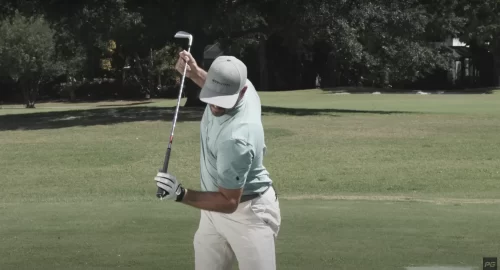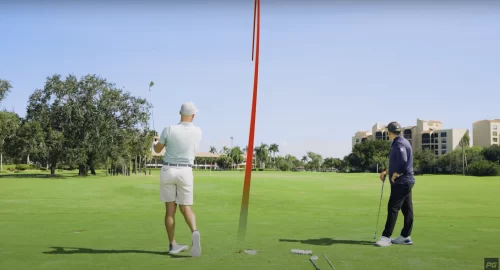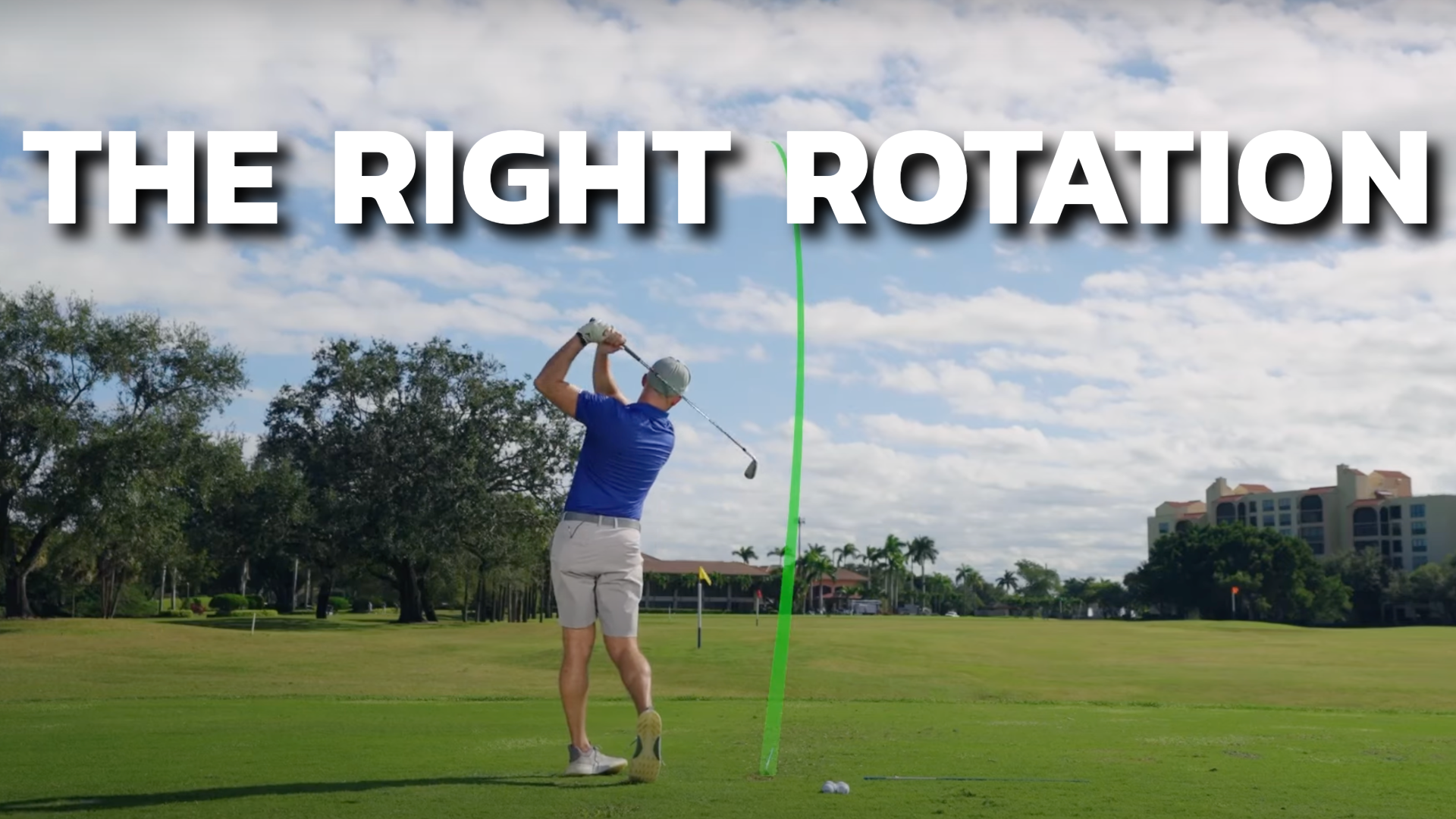
One of the key factors in a powerful and consistent golf swing is proper rotation. If you observe any professional golfer at their best, you’ll notice how well they rotate their body, particularly in the downswing, to generate speed and accuracy.
Many amateur golfers struggle with rotation, often believing their flexibility is the issue. However, the problem is generally not just flexibility but rather improper movement patterns. Let’s break down the right approach to making rotation easier and more effective in your swing. Watch the YouTube video below for a visual, and keep reading for a detailed explanation!
Why Rotation Matters in the Golf Swing
Proper rotation ensures that your belt buckle, belly button, and chest are facing the target at impact. This positioning helps achieve:
- Solid ball striking
- Better clubface control
- More consistency in your swing
- Increased power and distance
Without rotation, golfers tend to rely on their arms and hands, leading to inconsistent ball striking, poor clubface control, and reduced power. It’s simple – better rotation leads to a more efficient and repeatable golf swing.
The Core’s Role in Rotation
Most discussions about rotation focus on the hips and shoulders, but in the video, we emphasize the importance of the rib cage and core. The rib cage is the “engine” of the golf swing—when the rib cage moves correctly, the hips and shoulders will naturally follow.
The Two-Part Drill to Improve Golf Swing Rotation
Here’s a simple yet effective drill, using an eight or nine iron, to help you improve your golf swing rotation. To follow a bit easier, we recommend watching the video tutorial to get the movements and placements just right!
Step 1: Trail Side Rotation Feel
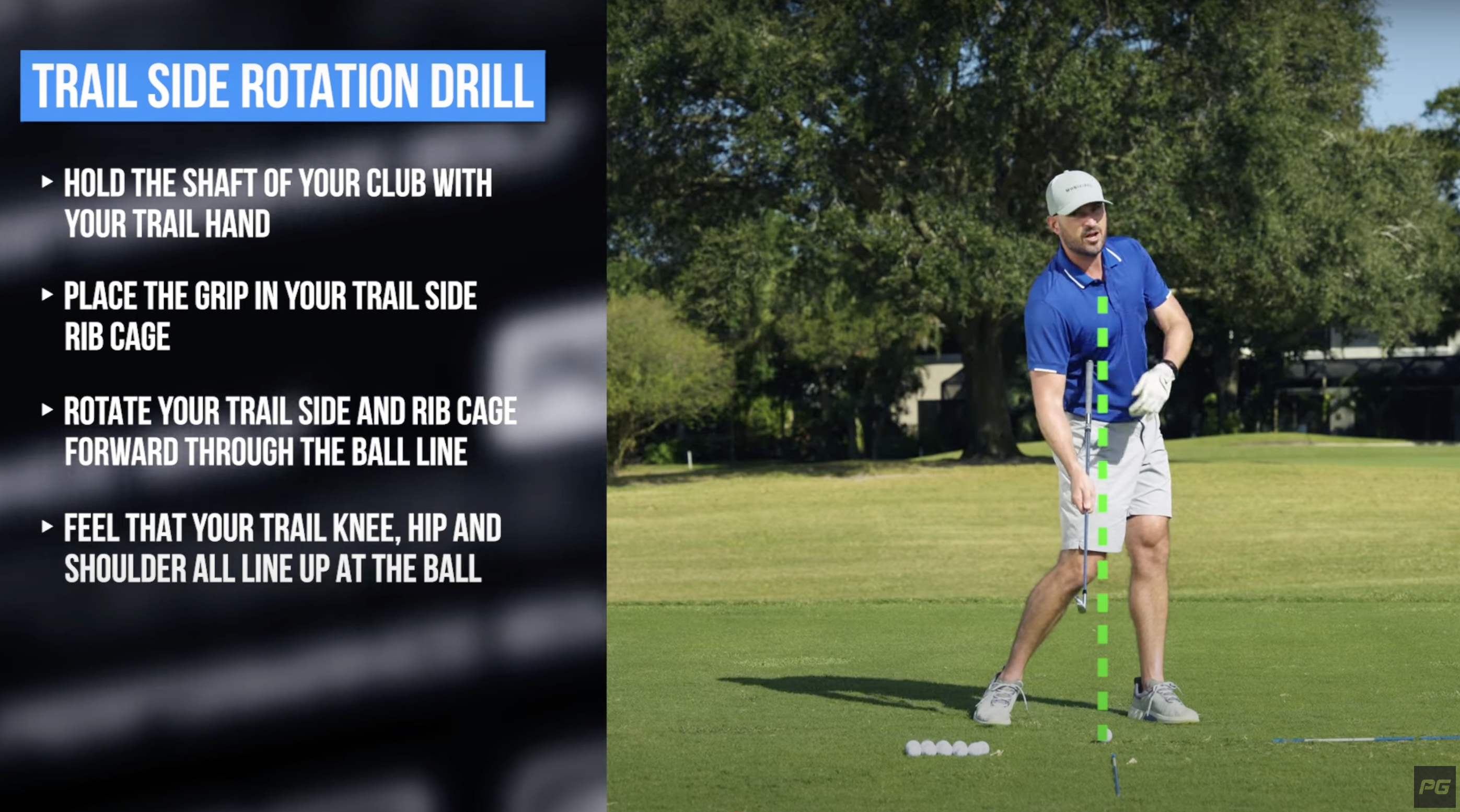
- Take an iron and place the end into the side of your trail rib cage (right side for right-handed golfers).
- Hold the club with your trail hand, keeping your arm mostly straight.
- As you start your downswing, focus on getting your trail knee, hip, rib cage, and shoulder moving toward the ball.
- Your belt buckle and shirt buttons should be facing the target at impact.
- This movement ensures proper rotation and prevents overuse of the hands and arms.
Step 2: Lead Side Rotation Feel
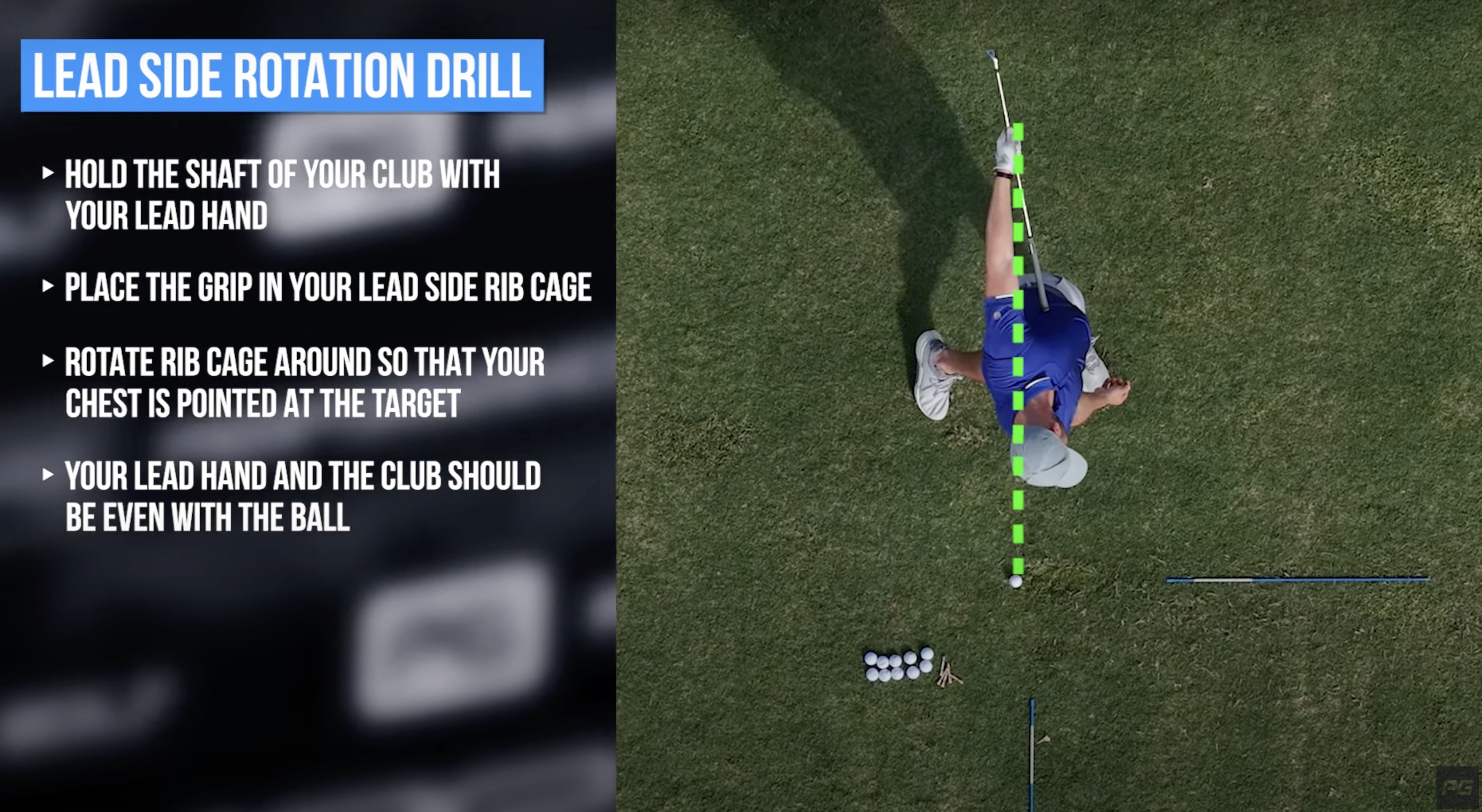
- Now, place the end of the club into your lead rib cage (left side for right-handed golfers).
- Keep your lead arm mostly straight and simulate a downswing motion.
- Focus on pulling your lead rib cage, hip, and shoulder back and around behind you.
- This movement ensures full body rotation and proper weight transfer.
Putting It All Together
Whether you prefer to focus on the trail side moving forward or the lead side moving around, both drills help achieve the same goal—better body rotation. By incorporating these movements into your practice routine, you can improve consistency, generate more power, and reduce reliance on hand and arm movement.
For more tips on improving your golf game, be sure to subscribe to Performance Golf and check out our new, immersive two-day golf school for highly personalized coaching.
